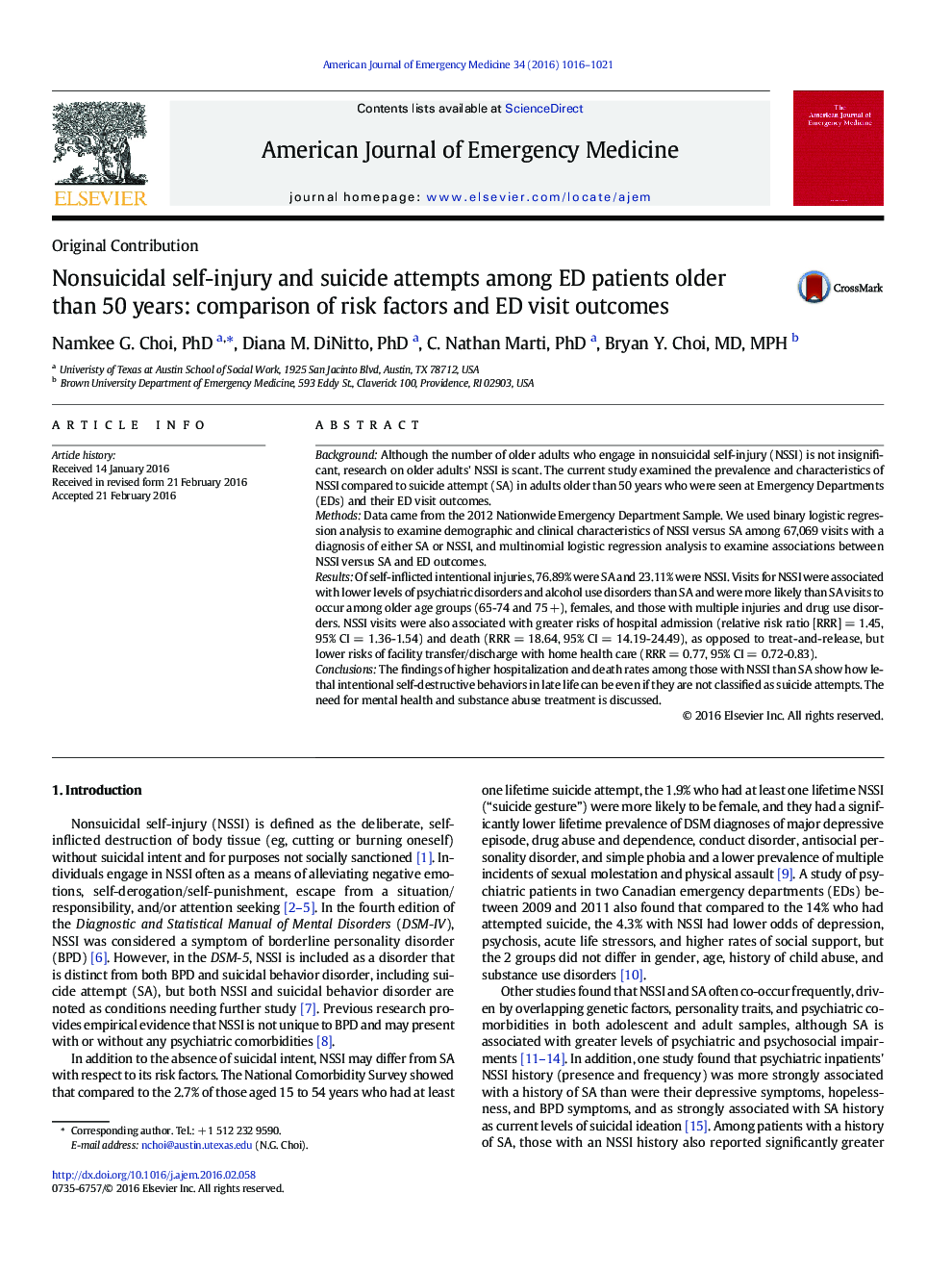| Article ID | Journal | Published Year | Pages | File Type |
|---|---|---|---|---|
| 3223117 | The American Journal of Emergency Medicine | 2016 | 6 Pages |
BackgroundAlthough the number of older adults who engage in nonsuicidal self-injury (NSSI) is not insignificant, research on older adults' NSSI is scant. The current study examined the prevalence and characteristics of NSSI compared to suicide attempt (SA) in adults older than 50 years who were seen at Emergency Departments (EDs) and their ED visit outcomes.MethodsData came from the 2012 Nationwide Emergency Department Sample. We used binary logistic regression analysis to examine demographic and clinical characteristics of NSSI versus SA among 67,069 visits with a diagnosis of either SA or NSSI, and multinomial logistic regression analysis to examine associations between NSSI versus SA and ED outcomes.ResultsOf self-inflicted intentional injuries, 76.89% were SA and 23.11% were NSSI. Visits for NSSI were associated with lower levels of psychiatric disorders and alcohol use disorders than SA and were more likely than SA visits to occur among older age groups (65-74 and 75 +), females, and those with multiple injuries and drug use disorders. NSSI visits were also associated with greater risks of hospital admission (relative risk ratio [RRR] = 1.45, 95% CI = 1.36-1.54) and death (RRR = 18.64, 95% CI = 14.19-24.49), as opposed to treat-and-release, but lower risks of facility transfer/discharge with home health care (RRR = 0.77, 95% CI = 0.72-0.83).ConclusionsThe findings of higher hospitalization and death rates among those with NSSI than SA show how lethal intentional self-destructive behaviors in late life can be even if they are not classified as suicide attempts. The need for mental health and substance abuse treatment is discussed.
